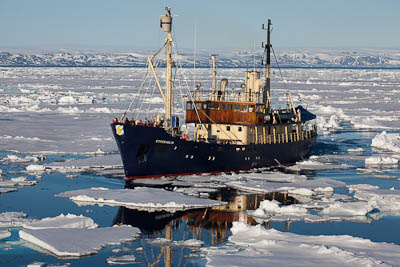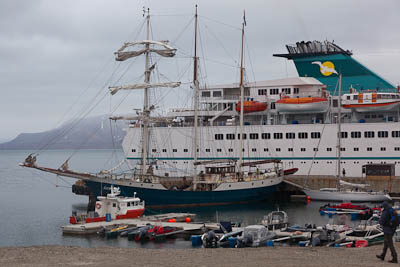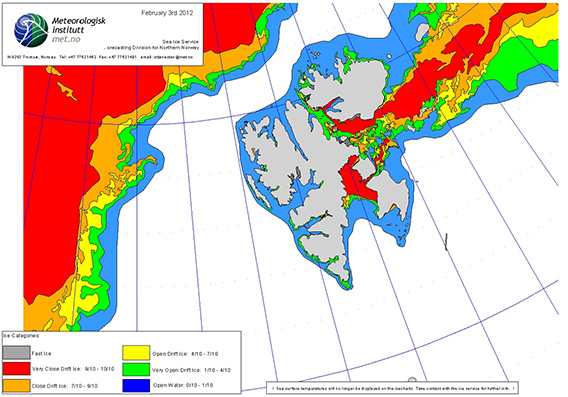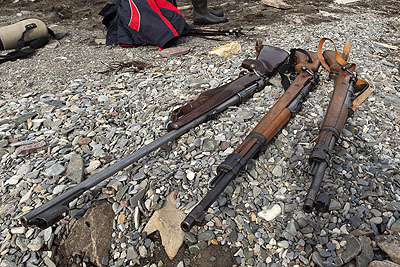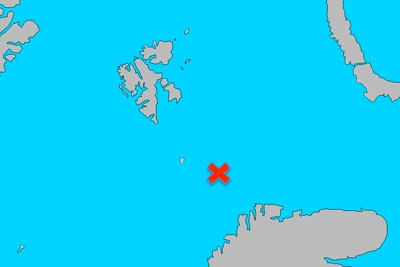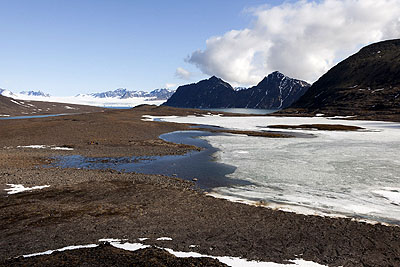-
current
recommendations- Liefdefjord
New page dedicated to one of Spitsbergen's most beautiful fjords. Background information and many photos.
- New Spitsbergen guidebook
The new edition of my Spitsbergen guidebook is out and available now!
- Liefdefjord
New page dedicated to one of Spitsbergen's most beautiful fjords. Background information and many photos.
Page Structure
-
Spitsbergen-News
- Select Month
- May 2025
- April 2025
- March 2025
- February 2025
- January 2025
- December 2024
- November 2024
- October 2024
- September 2024
- August 2024
- July 2024
- June 2024
- May 2024
- April 2024
- March 2024
- February 2024
- January 2024
- December 2023
- November 2023
- October 2023
- September 2023
- August 2023
- July 2023
- June 2023
- May 2023
- April 2023
- March 2023
- February 2023
- January 2023
- December 2022
- November 2022
- October 2022
- September 2022
- August 2022
- July 2022
- June 2022
- May 2022
- April 2022
- March 2022
- February 2022
- January 2022
- December 2021
- November 2021
- October 2021
- September 2021
- August 2021
- July 2021
- June 2021
- May 2021
- April 2021
- March 2021
- February 2021
- January 2021
- December 2020
- November 2020
- October 2020
- September 2020
- August 2020
- July 2020
- June 2020
- May 2020
- April 2020
- March 2020
- February 2020
- January 2020
- December 2019
- November 2019
- October 2019
- September 2019
- August 2019
- July 2019
- June 2019
- May 2019
- April 2019
- March 2019
- February 2019
- January 2019
- December 2018
- November 2018
- October 2018
- September 2018
- August 2018
- July 2018
- June 2018
- May 2018
- April 2018
- March 2018
- February 2018
- January 2018
- December 2017
- November 2017
- October 2017
- September 2017
- August 2017
- July 2017
- June 2017
- May 2017
- April 2017
- March 2017
- February 2017
- January 2017
- December 2016
- November 2016
- October 2016
- September 2016
- August 2016
- July 2016
- June 2016
- May 2016
- April 2016
- March 2016
- February 2016
- January 2016
- December 2015
- November 2015
- October 2015
- September 2015
- August 2015
- July 2015
- June 2015
- May 2015
- April 2015
- March 2015
- February 2015
- January 2015
- December 2014
- November 2014
- October 2014
- September 2014
- August 2014
- July 2014
- June 2014
- May 2014
- April 2014
- March 2014
- February 2014
- January 2014
- December 2013
- November 2013
- October 2013
- September 2013
- August 2013
- July 2013
- June 2013
- May 2013
- April 2013
- March 2013
- February 2013
- January 2013
- December 2012
- November 2012
- October 2012
- September 2012
- August 2012
- July 2012
- June 2012
- May 2012
- April 2012
- March 2012
- February 2012
- January 2012
- December 2011
- November 2011
- October 2011
- September 2011
- August 2011
- May 2011
- April 2011
- March 2011
- February 2011
- January 2011
- December 2010
- November 2010
- September 2010
- August 2010
- July 2010
- June 2010
- May 2010
- April 2010
- March 2010
- February 2010
- November 2009
- October 2009
- August 2009
- July 2009
- June 2009
- May 2009
- April 2009
- March 2009
- February 2009
- January 2009
- December 2008
- November 2008
- October 2008
- August 2008
- July 2008
- June 2008
- May 2008
- April 2008
- March 2008
- February 2008
- April 2000
- Select Month
-
weather information
-
Newsletter

| Guidebook: Spitsbergen-Svalbard |
Home →
Yearly Archives: 2012 − News & Stories
IMO: polar code not before 2015
The IMO (International Maritime Organization) is an agency of the UN to produce a legal framework that controls maritime activity globally. Work on a polar code has started years ago to ensure safety of shipping in polar waters. Aspects of the polar code touch various fields such as the construction of ships, safety equipment and qualifications of Captains and nautical officers, to mention a few. The environment is an important major focus.
The matter is complex and partly controversial. A decision will not be made in 2012 as originally scheduled, but is now expected for late 2014. The slow process is critizised by environmental organiszations. The pronounced increase of ship traffic especially of cargo ships and oil tankers in certain areas such as the northwest and northeast passage (Canada/Alaska, Russia) gives indeed reason for environmental concerns. On the other hand, national governments can already implement important legislation in many areas. The Norwegian has introduced an environmentally important ban on heavy oil in Spitsbergen in recent years. A similar ban is in force in Antarctica since August 2011.
Part of the discussion is a general ban on all ships that are older than a certain year such as 1996. If such a drastic step, which would have drastic consequences for many ships, would be equally beneficial for safety and environment, is in many cases controversial. In the past, smaller ice-going vessels were often built very strongly. It would mostly be difficult or impossible to replace such vessels adequately.
The complexity of the whole matter is increased by the fact that it concerns huge areas with a wide diversity of all kinds of conditions. The west coast of Spitsbergen, for example, is ice-free for most of the year and usually easily accessible for all kinds of ships. The use of icebreakers in this area, which is small but has a lot of local traffic, would be a great and environmentally contraproductive waste of fuel and resources. The near-by northeastern corner of Greenland is in contrast one of the areas with the most severe ice conditions on the planet even in summer and can only be reached with heavy icebreakers. Similar regional differences exist in Antarctica, as is made clear by the comparison between the ice-free northwestern area of the Antarctic Peninsula with the ice-covered central Weddell and Ross Seas.
The Swedish icebreaker Oden at the west coast of Spitsbergen (June 2008, with the 3 heirs to the Scandinavian thrones on board).
The small Swedish ship Stockholm, here at the north coast of Spitsbergen, was built in 1953 and is thus one of the oldest ships that is regularly sailing in these waters, but also one of the most robust ones.
Shrimp trawling in Hinlopenrenna
The Norwegian authority for Fishery (Fiskeridirektoratet) has opened an area for shrimp trawling that has been off limits for fishing ships until now. Hinlopenrenna includes Hinlopen strait as well as deep water areas north and south of it.
The press release of the Fiskeridirektoratet does not include any further details.
Hinlopen Strait.
Compulsory pilotage in Spitsbergen
The Norwegian Kystverket (coastal and navigation authority) plans to introduce compulsory pilotage for most of the waters around Spitsbergen. Coal freighters to Sveagruava may have to carry pilots already in the upcoming summer of 2012. From 2014, this will apply to all ships longer than 70 metres and passenger ships longer than 24 metres. Only parts of Isfjord and Bellsund will be excluded.
Captains with sufficient experience and local knowledge can, after a test, be certified to be excepted from compulsory pilotage. If this is practicable remains to be seen: costs and fees will be high, and it should currently not be taken for granted that tests will be available in other languages than Norwegian. Another requirement will probably be that a certified Captain or navigation officer is in charge on the bridge at any time when the ship is moving. This will hardly be practicable for smaller ships and it does not contribute anything to nautical safety: large parts of most common sailing routes in Spitsbergen (Svalbard) are nautically very easy and straightforward and can easily be handled by all navigation officers.
Smaller ships between 24 and 100 metres, so-called expedition cruise ships, will be threatened with an immediate termination of their activities: the costs for pilotage during a 10 day cruise will be beyond 100,000 Euro, an amount that makes sailing economically completely impossible.
Large parts of the waters around Spitsbergen are deep and well enough charted by now to allow comparatively easy navigation. Where pilots can be found who can make a noticeable difference in more difficult waters, compared to what present-day Captains can do, remains an open question at the time of writing. The law is supposed to enter force on 01 July 2012.
Spitsbergen is annually visited by ships of different sizes. The harbor of Ny Ålesund.
Source: Kystverket
Temperature records in Spitsbergen
While central and eastern Europe are suffering from severe cold, temperatures in Spitsbergen are higher than ever measured in February. Measuring was started in 1975. Longyearbyen airport had 7 degrees centigrade above freezing, exactly 1 degree higher than the previous record for February (measured 17.2.2005).
Also Sveagruva has the doubtful honour to present a new record, amounting to 6.5 degrees, or 1.3 degrees higher than previously (5.2 degrees on 22.2.2006). Also the other stations in Ny Ålesund and on Hopen and Bear Island have temperatures above freezing.
Towards the weekend the mercury is expected to drop well below zero again.
Source: Svalbardposten
Hardly any drift ice around Spitsbergen
Not only the weather, but also the ice situation around Spitsbergen is currently very unusual. Especially the relatively high water temperatures have a strong effect on the formation and distribution of drift ice. Statistically, the annual maximum is reached in April. As little ice as now in early February is very unusual.
Further east, in Franz Josef Land, there is a dense and extensive drift ice cover.
Source (ice chart): Norwegian meteorological institute met.no
Weather capers in Spitsbergen
The last days have seen some rather unusual weather phenomena in Spitsbergen. On Monday (January 30), Longyearbyen was the warmest place in Norway with 4 degrees centigrade above freezing. 26,5 mm of rain did not make it more enjoyable, and as a consequence, several roads had to be closed due to a strongly increased avalanche risk and a landing at the airport had to be cancelled due to slickness.
The rain was nothing compared to Ny Ålesund, where a considerable 98 mm were measured within 24 hours, which is clearly a local record. The warmest day measured in Spitsbergen so far in January was however January 01, 2006, when the mercury went up to 7,7 degrees. In comparison, one year ago (January 30, 2011) it was as cold as 31,5 degrees below zero.
Changing weather with cold and warm spells is typical for the cold season, but the recent warm phase is unusually long and intense.
Source: Svalbardposten
Deadly polar bear attack in Tempelfjorden
In August 2011, one person died and four other ones were seriously injured under a polar bear attack on a camp in Tempelfjord (see August 2011 news on this site for further details). The Norwegian police has now published a report on the technical condition of the safety equipment. Both the alarm fence and the rifle had failed, which contributed to the tragic outcome of the incident. Four attempts to shoot the bear failed, the bear was shot with a fifth cartridge, which had been in the rifle before, but had been ejected without firing and was then found on the ground.
According to the Norwegian police, both the rifle and the alarm fence worked when handled properly. As had been assumed before, it seems now safe to say that misusage of the alarm fence and the rifle contributed to the tragic development. Based on the information available, it is however impossible to say if it might have been possible to shoot the bear before the victim was killed. The bear was extremely aggressive and the attack went very rapidly.
Mauser-style rifles are commonly used for protection against polar bears in Spitsbergen.
East Svalbard management plan: open letter from Thor Larsen
Thor Larsen is a well-known polar bear biologist. He was research director at the Norwegian Polar Institute and is now professor emeritus. With a large number of expeditions over more than half a century, he is one of the veterans of Norwegian polar research.
Recently, Thor Larsen has expressed substantial criticism about the latest proposal of a management plan for east Svalbard, which includes large so-called scientific reference areas. It can be expected that public access to these areas will be significantly more difficult, if not impossible. Larsen critizises that the plan is kept upright although several working groups of the Sysselmannen have concluded that conflicts between tourism and science can not be identified at the time being and are not expected in the future either. The actual environmental impact of organized tourism is described as minimal by these working groups. For example, it was feared that tourist visits to walrus haulout sites might lead to disturbance. Monitoring with automatic cameras over several years has, however, not yielded any evidence to support this. According to Larsen, remaining problems such as local erosion can be solved with the implementation of site-specific guidelines wherever needed. A need for closing large areas is not seen, neither from a scientific nor from an environmental perspective, writes Larsen, also pointing out that the areas in question are all inside the nature reserves, which are already enjoying strict protection. The current regulations are well capable of protecting scientific and environmental needs, according to Larsen.
Larsen critizises that higher administrative levels keep the proposal to reserve large areas as “scientific reference areas” upright despite of this obvious lack of data which might support such a drastic step. He also points out that the scientific quality of the papers that suggest the proposal is not meeting any standards. Larsen supposes that relevant institutions now insist on their proposal because of a feared “loss of face” and reminds of a common-sense rule for mountaineering that is well-known in Norway: it is never too late to turn around.
Thor Larsen’s complete letter was published last Friday in Svalbardposten (02/2012) in Norwegian. An English translation can be downloaded here.
Northeastern Nordaustland is mostly very rocky. Nobody really knows why this area should become an exclusive playground for “science relevant to administration”.
Diesel leakage at Kapp Linné
The old radio station Isfjord Radio at Kapp Linné at the mouth of Isfjord was abandoned about 10 years ago. Today, the protected buildings are used only during the spring and summer season for touristic purposes. For the rest of the year, the houses are standing empty, mostly without supervision.
Employees of the owner SNSG (Store Norske Spitsbergen Grubekompani) have discovered a diesel leakage. It is uncertain for how long diesel could escape from the tank, but the Sysselmannen assumes that up to 100,000 or 150,000 litres may have entered the local environment. The leakage happened in a generator room.
The polar winter makes it impossible to take counteractive measures.
The houses of the former radio station Isfjord Radio at Kapp Linné.
Management plan for East Svalbard: letter to the editor of Svalbardposten
The ongoing controversy about the East Svalbard management plan has been covered repeatedly on these pages, most recently in early December, 2011. Now 17 expedition leaders have given their comments and made alternative suggestions in a letter-to-the-editor of Svalbardposten, which was published in Norwegian on last Friday (Svalbardposten 01/2012). An English translation can be downloaded here (englisch).
Many of the undersigned, including the owner of this website, have university-level education in natural sciences and are dedicated environmentalists with experience from areas, where tourism is successfully controlled, such as Antarctica.
According to the latest official proposal, Duvefjord is to be part of the controversial “Zone A”, the “scientific reference area”.
Exploration drilling in the Barents Sea
OMV Norge, the Norwegian daughter of the international oil- and gas company OMV, plans exploration drillings in the field PL 537, about 196 kilometres southeast of Bear Island, searching for hydrocarbons. The depth of the Barents Sea in this area is near 400 metres.
The Barents Sea is biologically very productive and ecologically sensitive. It is highly important for large seabird populations, marine mammals and the fishing industry.
The approximate location of PL 537 in the Barents Sea.
Source: Oilinfo.no
AECO: site-specific guidelines
AECO (Arctic expedition cruise operators) has published site-specific guidelines. These are intended to support visitors at a number of mostly frequently visited site to treat the natural and historical environment carefully. AECO member companies, which run most tourist ships that travel Spitsbergen on a regular basis, have commited themselves to the AECO guidelines. All other ships, including private boats, are invited to follow them.
The guidelines can be downloaded from AECO.
As expected, experienced expedition leaders won’t find a lot of new information in the guidelines. Tourleaders with lesser experience and private visitors will find them interesting and helpful in order to avoid or minimize any impact.
From the guidelines: Ytre Norskøya. © AECO.
Source: AECO
Spitsbergen on the UNESCO world heritage list?
In December it emerged that the Norwegian government has plans to nominate the Spitsbergen archipelago (at least partly) for the UNESCO world heritage list. Political parties and representatives of the local populations are spectical. Local politicians in Longyearbyen said they would prefer such initiatives to come from the local population, rather than the government in Oslo, which is often too far away from real life in the arctic.
It is also believed that a nomination for the UNESCO world heritage list is seen as a political exchange for a new mine, which has recently been announced to be permitted. Politicians in Longyearbyen fear that the ministry of the environment is looking for a political balance for the new mine at the possible expense of locals and tourists, who may face new restrictions which are often beneficial for Oslo politicians rather than the environment.
Controversial: a nomination for the UENSCO world heritage list. The image shows a scene from Krossfjord.
News-Listing live generated at 2025/May/04 at 04:53:43 Uhr (GMT+1)
